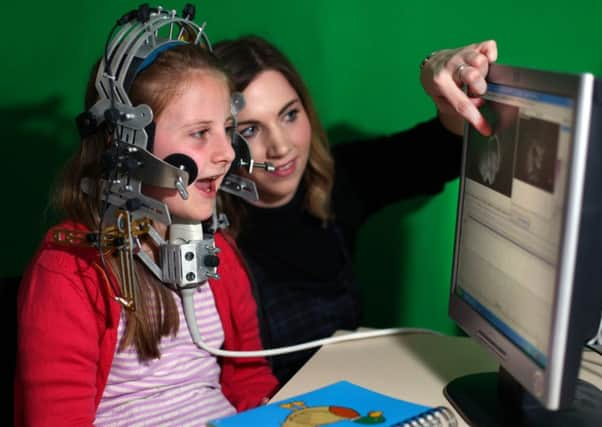Edinburgh speech therapy project helps children find voice
This article contains affiliate links. We may earn a small commission on items purchased through this article, but that does not affect our editorial judgement.


Experts from the pioneering Clinical Audiology, Speech and Language Research Centre (CASL) and the University of Strathclyde are working with Articulate Instruments Ltd to help 20 youngsters aged six to 15 find their voices with ultrasound technology and clinical treatment methods.
The £140,000 UltraPhonix project evaluates the effectiveness of using ultrasound as a visual feedback tool, in order to treat speech sound disorders that cannot be treated with traditional speech therapy methods.
Advertisement
Hide AdAdvertisement
Hide AdSpeech sound disorders are common in childhood, affecting at least 6.5 per cent of primary school aged children. Such disorders make children’s speech difficult to understand, which in turn affects social skills and educational attainment.
Most children who have difficulty creating the correct speech sounds receive therapy which relies on listening skills. The child must listen to their own speech sounds and follow instructions provided by the clinician to try to modify them.
However, some children struggle to improve their speech with traditional methods, and the clinician might even be uncertain about what is really going on inside the mouth.
Since speech is made with the tongue, and the tongue is largely hidden from view, this means that observations of the speech disorder and feedback on how to improve it need to be indirect.
Ultrasound makes it possible for children to visualise their efforts to make new tongue shapes and sequences of tongue movements, getting direct and immediate feedback which also lets the clinician guide their progress.
Software designed by the group provides example target shapes and sequences for the children to attempt to copy and allows the children’s own efforts to be played back so that they can see and hear their progress.
The UltraPhonix project aims to provide the evidence needed to support the use of ultrasound by providing clinical treatment at QMU by a dedicated research team, with the 18th month scheme due to be completed in November 2016.
Dr Joanne Cleland of the University of Strathclyde is the lead clinical researcher on the project.
Advertisement
Hide AdAdvertisement
Hide AdHe said: “The research is already showing positive results, with children learning to produce speech sounds they have previously found impossible within just a few session of ultrasound-based therapy.”
Professor Jim Scobbie, Director of the Clinical Audiology, Speech and Language Research Centre (CASL) at QMU, said: “We’re forging ahead as leaders in this field.
“While ultrasound is also being investigated by colleagues in North America and Australia, this collaboration between QMU and the University of Strathclyde is the first in the world to treat such a wide range of persistent speech sound disorders.”
Eleven-year old Rosie Pink Smith, who attends St Joseph’s RC Primary in Linlithgow is one of 20 local youngsters benefiting from the UltraPhonix project at QMU.
Rosie was diagnosed with Developmental Verbal Dyspraxia in 2010 and was referred to speech and language experts at QMU by NHS Lothian in July 2015.
Children with Developmental Verbal Dyspraxia find it hard to produce individual speech sounds and to put sounds together in the right order in words. As a result, their speech is often hard to understand.
Rosie received 16 intensive speech and language therapy sessions at QMU over six months as part of the UltraPhonix project.
There was a marked improvement in Rosie’s ability to produce a variety speech sounds during this period, including the letters ‘K’ and ‘G’. At her first baseline assessment, Rosie scored 1 per cent (1/109) and her final maintenance session, she scored 55 per cent (60/109).
Advertisement
Hide AdAdvertisement
Hide AdRosie’s mother, Anna Pink, said: “We’re really pleased with the significant progress Rosie has made with her speech since receiving help from QMU.
“The intensive series of speech and language therapy sessions and assessments allowed us to see a rapid change in the quality of Rosie’s speech in a relatively short period.”
The UltraPhonix project is being funded by the Scottish Government Chief Scientist Office (CSO). CSO supports and promotes research aimed at improving the quality and cost-effectiveness of services offered by NHS Scotland.
DOWNLOAD THE SCOTSMAN APP ON ITUNES OR GOOGLE PLAY
